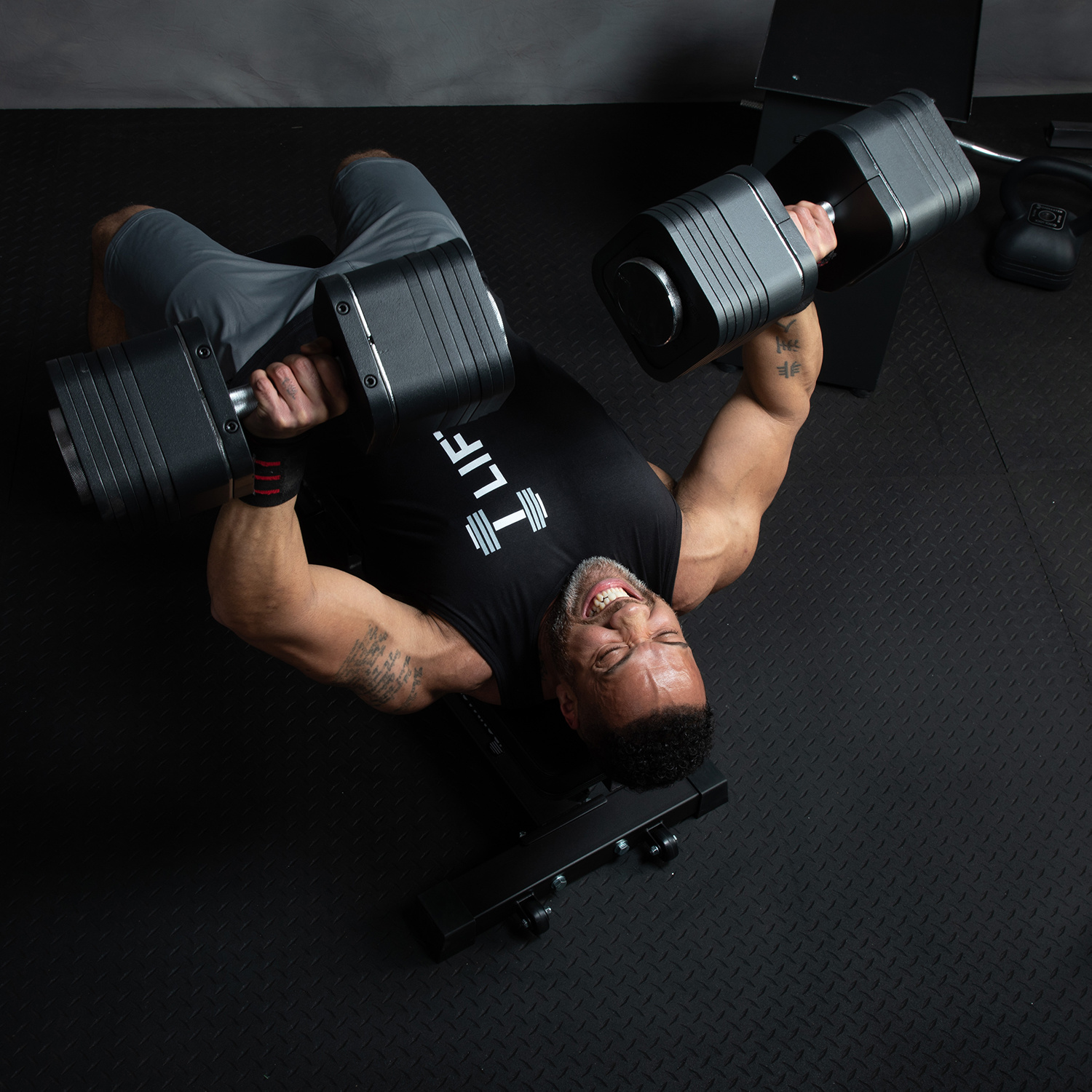Strongman training at home
Strongman Training at Home
To be a strongman requires exceptional functional strength that is not achieved through basic resistance training.
As the name implies, to be a strongman requires exceptional functional strength that is not achieved through basic resistance training. It requires strength, power, movement coordination, plus a ton of core and grip strength. Sure, it helps to have a huge deadlift and squat, but those lifts alone will not suffice. Not all gyms have Strongman equipment to train with such as Atlas Stones, yolks, farmer’s carry, circus dumbbells, log press, etc. In this blog, I will give an overview of what to expect in a basic Strongman event, the key adaptations to achieve by progressive overload in training, nutrition recommendations, injury avoidance, and some home strength training ideas to add to your training.
Most Common Strongman Competition Lifts
Strongman competitions vary wildly depending on the contest. However, the core competencies required for training to become a Strongman are rather simple. You need strong functional/practical strength, great core stability, strength endurance, and a plethora of raw power!
Here are a few staples in any Strongman event that you can use to design your training around:
- Atlas Stones
- Axle Press
- Car Flip
- Conan's Wheel
- Deadlift
- Deadlift hold
- Duck walk
- Dumbbell Press
- Farmer's Carry
- Keg Toss
Key Adaptations in Training and Progressive Overload
(Source material: NASM blog)
The key to developing the adaptations necessary to be a successful Strongman relies heavily on placing enough stress or demand on the body to force an adaptation. The mechanism in which this happens is through the General Adaptation Syndrome which causes the body to respond to the increased demand being exerted. Increased core strength, maximal strength, proprioception, and power are a few examples of physical reactions to progressive overloading. Progressively overloading your training such as in powerlifting requires adding more weight and ultimately increasing intensity. The heavier weights will definitely help support you at a fundamental level in Strongman competitions, but powerlifting numbers do not always translate directly into Strongman numbers. This is mostly due to moving in multiplanar planes of motion with imbalanced loading - something you do not experience in normal weight training.
Micro & Macro Nutrition for Strongman
To be a Strongman you will need to eat like one! Putting on size, building muscle and fueling your body is no easy feat. Depending on the size of the athlete, some Strongmen can eat up to 8,000-10,000 calories a day! (I am not recommending that here for 99.9% of the rest of us mere mortals). Think about some of the most legendary Strongman athletes in recent history such as Marius Pudzianowski, Eddie Hall, Brian Shaw or Thor Bjornsson.
Here are some basic rules of thumb to help get you started on your Strongman journey.
First off, despite what you may think, our bodies cannot build muscle and burn fat simultaneously. We are in one of two states at any given time: Anabolic or Catabolic. Subsequently, in order to remain anabolic and grow we must consume more caloric energy than we displace or burn per day. This leaves us with a net-positive caloric surplus and allows the muscles to grow in this anabolic environment. Of course, the types of food and timing also matter. For high-strength short-bursts of energy like Strongman we need to fuel the muscles with enough Adenosine Triphosphate and glucose to meet the explosive demands of the sport. As a result, I recommend sticking to around 45-50% of your daily caloric intake from carbs. Stick with mostly complex carbs spread evenly across 6 meals per day and add in some simple carbs all around and during your workouts. This will help fuel your intense training and improve recovery to allow you to get back into the gym sooner. As for proteins, a good rule of thumb is sticking with 1.0-1.5 grams of proteins per pound of bodyweight. The remainder of your daily calories can come from healthy fats (25-30%).
To calculate your macronutrient intake for building muscle, one method is using your Basal Metabolic Rate (BMR) via the Mifflin-St Jeor equation:
-
Men: (10 × weight in kg) + (6.25 × height in cm) - (5 × age in years) + 5
-
Women: (10 × weight in kg) + (6.25 × height in cm) - (5 × age in years) - 161
Next, you will want to calculate your Total Daily Energy Expenditure (TDEE) by multiplying your BMR times the Katch-McArdle multipliers which range from 1.2 to 1.9 depending on activity level.
From there, the simplest way to estimate your daily macronutrient intake is to multiply your TDEE by 1.1 (for building muscle). Every 3rd week or so you can try increasing your calories by 5-10% to continue growing.
There are some really nice online tools to help you calculate your nutrition for free, but I always recommend working with a nutritionist that specializes in sport-specific goals. Here is a free resource created by the National Academy of Sports Medicine (NASM). You can always reach out directly to me on Instagram for help determining your macros.
Injury Avoidance and Workarounds
When it comes to avoiding injuries in Strongman, sometimes they will be inevitable. However, with proper planning and listening to your body, you can certainly help mitigate and prevent the most serious injuries.
Here are a few key principles that have helped extend my career to date:
-
Rule #1, always listen to your body closely. When you are too sore to train, joints hurt, or you feel a potential injury, STOP. Treat the problem and take a rest day to recover
-
Rule #2, never forget rule #1
-
Wear wraps and belts like your life depends on it...because it does! This will help avoid discomfort in the joints, lower injury risk, and ultimately extend your career
-
Always warm up with some light cardio, active stretching, and dynamic stretching through a full range of motion (ROM) for strongman
-
Always use spotters when you can
-
Don’t ego lift. Know your limits. Train smart and progressively overload your body in a controlled and sustainable way. Not everyone can be Larry Wheels!
Example Workout for Home Gym
Here are a few exercises that can be done from home:
- Farmer’s Carry w/QLDB’s and Fat Grips (walking under heavy loads/grip strength)
- Farmer’s Carry w/QL Straight Bar (walking under heavy loads/grip strength)
- Single Arm Clean and Press w/QL DB’s and Fat Grips (mimic Circus DB’s)
- Heavy Goblet Squats w/QLDB or QLKB (train deep squat with front loading)
- Walking Squat with Barbell (walking under heavy load)
- Deadlift and paused reps (Olympic Barbell OB 86 + IM Weight Plates)
- Atlas Stones
- Heavy Zercher’s Squats w/IM OB 86 (Barbell front loaded similar to Atlas Stone)
- QL DB’s Clean and Press (mimic Log Press)
- Sled Push/Pull
Day 1 - Lower Body
- Back Squats 5 sets of 2-8 reps pyramid up in weight to a heavy top set
- Heavy Goblet squats w/QLDB 5 sets of 8-12 reps
- DB Walking Lunges w/QLDB 5 sets 8-12 reps
- Zercher Squats on IM2000 3 sets of 5-10 reps
Day 2 - Chest & Shoulders
- Flat Bench Press 5 sets of 2-8 reps pyramid up in weight to a heavy top set
- Overhead DB Press w/QLDB 5 sets of 8-12 reps
- Overhead DB Tricep Extensions w/QLDB 5 sets 8-12 reps
- Single Arm DB Clean and Press w/QLDB 3 sets of 5-10 reps
Day 3 - Back/Posterior Chain
- Deadlifts 5 sets of 2-8 reps pyramid up in weight to a heavy top set
- Heavy DB Rows on Super Bench w/QLDB 5 sets of 8-12 reps
- Heavy seated rows on IM2000 3 sets 8-12 reps
- Lat Pulldowns on IM2000 3 sets of 5-10 reps
- Romanian Deadlifts (RDL) w/QLDB’s 3 sets of 5-10 reps
Day 4 - Strongman Event Training
- Atlas Stones (or Sandbags) 3 rounds as many reps in 60 sec
- Farmer’s Carry (can use QLDB’s) 3 rounds to failure
- Clean & Press (or Log Press) 3 rounds as many reps in 60 sec
- Sled Push 3 rounds x 20 sec
- Sled Pull 3 rounds x 20 sec
- Keg Toss (Throw Sandbags) 3 rounds as many reps in 60 sec
Day 5 - Rest
Day 6 - Cardio & Core 60 mins
Day 7 - Rest
*Repeat and be sure to progressively overload the weight/duration/intensity 5-10% each week
Essentially, you will need to be sure to continuously practice carrying large heavy and awkward objects, increase your push/pull capacity, increase your aerobic capacity, build explosiveness, and moving under imbalanced loading.
Hopefully, this blog will help guide you as you venture into your own form of Strongman training. Whether you are looking to become a competitive athlete, or just looking to be a weekend warrior, Ironmaster will be there to support you along your journey!
Paused Deadlift
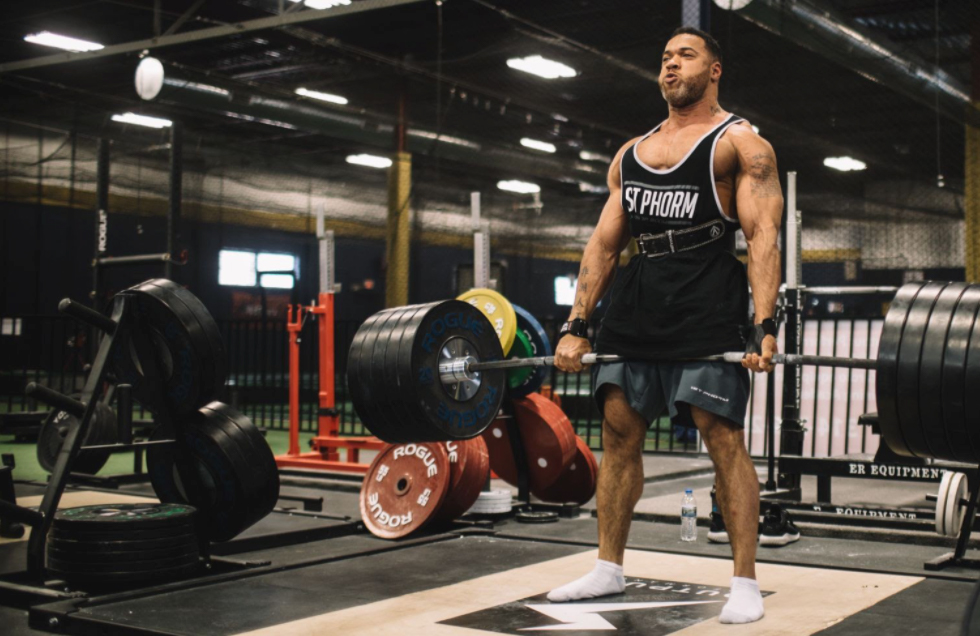
Farmer's Carry, Quick-Lock Adjustable Dumbbells
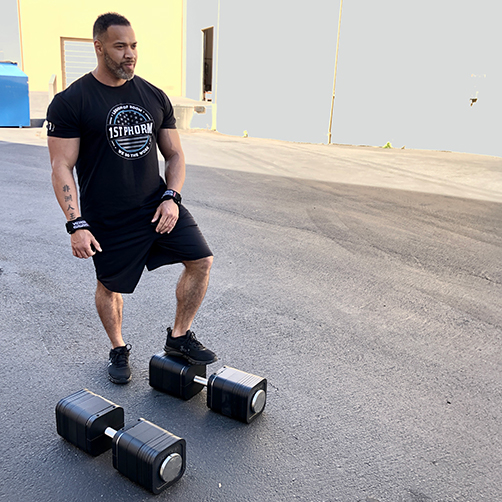
Goblet Squat, Quick-Lock Adjustable Dumbbell
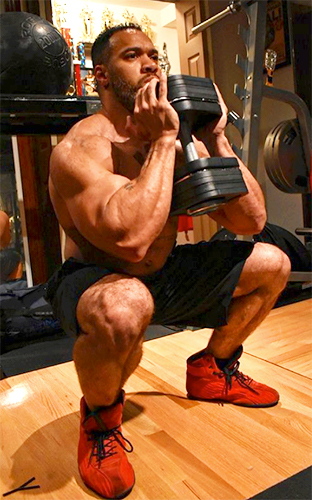
Zercher Squat
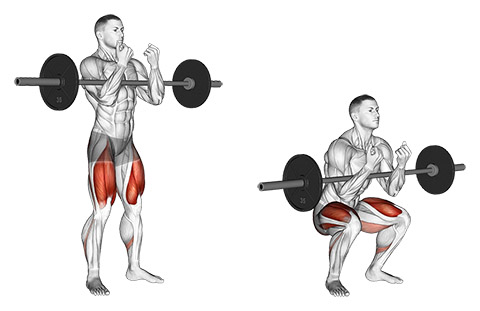
Protective Training Gear

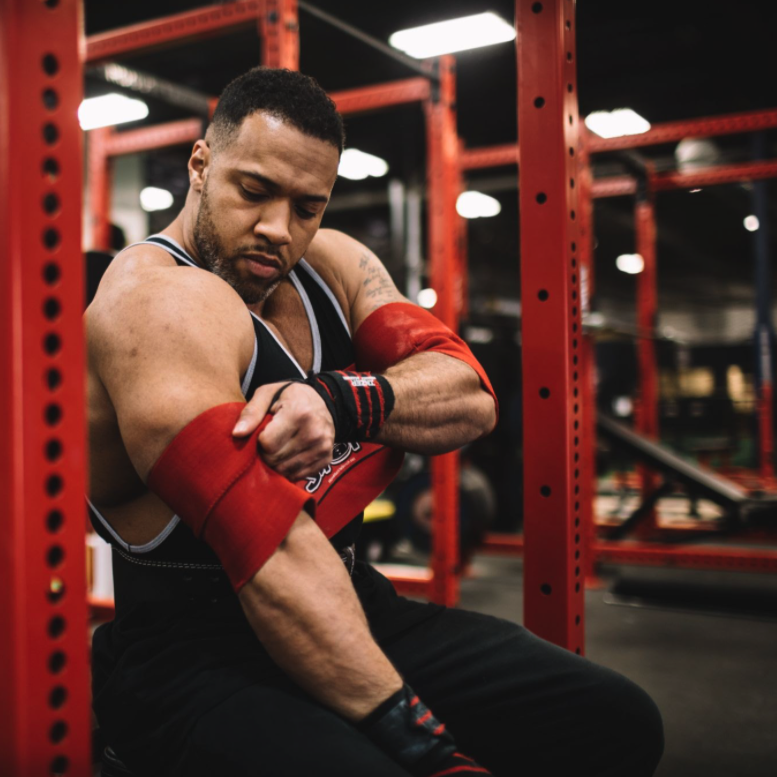
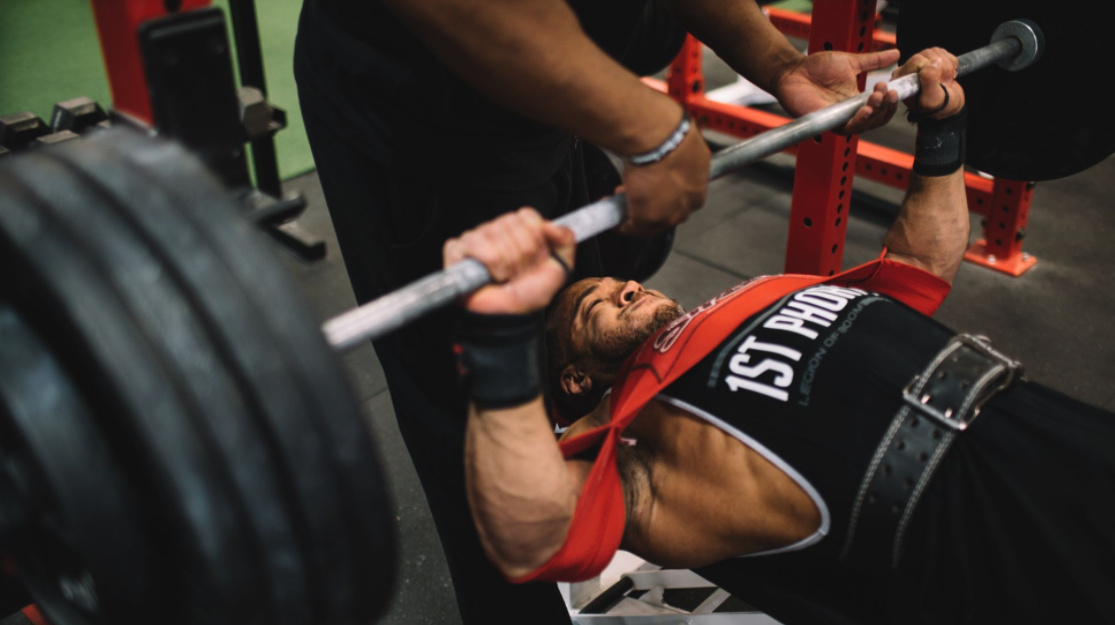
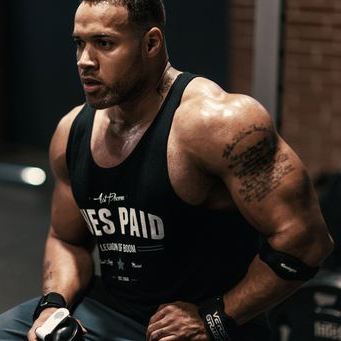
About the author Andre Adams
With over 15 years of experience, Andre Adams is a National Academy of Sports Medicine (NASM) Master Trainer with credentials in women's fitness specialist (WFS), performance enhancement specialist (PES), mental toughness (MT), weight loss specialist (WLS), Group Personal Training Specialist (PTS), and fitness nutrition specialist (FNS). Additionally, he offers advice to help curb childhood obesity in adolescents.
Andre is also a professional athlete in the International Federation of Bodybuilding (IFBB) pro league having competed in the 2015 Mr. Olympia and Arnold Classic professional physique divisions.
Instagram @AndreAdams_Official
Health & Performance Supplements www.1stphorm.com/AndreAdams
Website: www.andreadamsofficial.com
Recommended 1st Phorm supplements by Andre:
- AlphaCre HD
- AlphaSurge
- Phormula-1 Protein
- Ignition
- EAA’s
- BCAA’s

